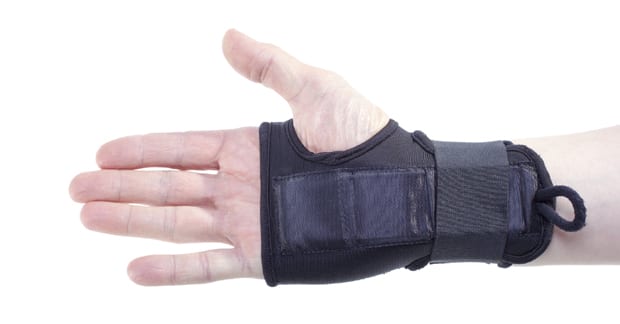You are driving down the road and you notice numbness and tingling in your fingers. You find temporary help by shaking and flicking the fingers, trying to “wake them up.” You’ve also noticed your sleep is becoming interrupted and the need to shake and flick the fingers in the middle of the night is becoming more frequent. If this sounds like you or someone you know, then you’re not alone. This condition, carpal tunnel syndrome (CTS), affects many people from office workers to assembly line workers and even stay-at-home parents.
Basically, CTS is caused by the build up of pressure in the carpal tunnel through which the median nerve and nine tendons pass on the way into the hand. When repetitive work/fast movements are performed over hours at a time and day after day, the friction produced by the tendons rubbing against each other results in heat, swelling, pain, and median nerve pinching which produces the classic symptom of tingling/numbness into the 2nd, 3rd, and half of the 4th finger. In 1998, three of every 10,000 workers lost work time due to CTS, of which half missed more than ten days of work. In 1998, the average lifetime cost of CTS was estimated at $30,000 for each worker.
So, how do you know if you have CTS? The early signs include occasional numbness or tingling in the fingers that you probably wouldn’t think much about since simply shaking your hand or flick the fingers, it goes away. As the numbness becomes more frequent and it does not respond by shaking and flicking the fingers as quickly, you might take notice. Without proper management, difficulty buttoning shirts/cuffs, writing, holding onto small objects, and opening jars all become gradually more pronounced. When sleep is interrupted, especially when it becomes necessary to get up and move around before being able to return to sleep, that’s when people usually decide, “I better see someone for this!”
Treatment success is directly related to how fast a person reacts by making a prompt appointment. The best results always occur when care is obtained quickly, when the initial symptoms first appear. In addition, there are sometimes underlying contributors or causes such as diabetes, arthritis, pregnancy, birth control pill use, hypothyroidism, obesity, and other conditions that may need proper management in order to relieve the symptoms. Non-surgical care includes the use of wrist splints (especially at night when sleeping), anti-inflammatory measures (medications, gluten-free/paleo diet, vitamin B6 and others vitamins/supplements such as omega-3 fatty acids/fish oil, vitamin D3 in high doses, calcium, magnesium, and CoQ10), workstation modifications, forearm exercises, chiropractic manipulation of the neck and arm, acupuncture, and certain modalities such as low level laser/light therapy.
Surgery should always be considered a “last resort” after all non-surgical approaches have been exhausted. Rarely is there a “medical emergency” that warrants prompt surgical release except in cases of fracture where the carpal tunnel canal is abruptly reduced in size.





